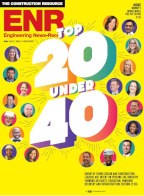
Developers and designers in the New York-New Jersey region will soon have a new tool to help create more storm- and flood-resilient buildings and parks along the water. The voluntary Waterfront Edge Guidelines rating system, called WEDG and fashioned after the LEED green-building rating system, could become a model for other coastal and riverfront areas, says it developer.
The checklist-based WEDG is intended to encourage designs that are resilient, accessible to the public, ecologically healthy and economically feasible. "We are trying to incentivize waterfront edge design," said Michael Porto, director of outreach and planning for the non-profit Metropolitan Waterfront Alliance, at MWA's 2014 Waterfront Conference, held on April 23 in New York City.
With input from many stakeholders, MWA is developing the WEDG rating system and forming a council to administer it. The draft is available, and the first version should be released in September.
"WEDG gives the development community regulatory predictability," said Venetia Lannon, director of New York State Dept. of Environmental Conservation's Region 2. She expects users of the voluntary rating system to experience shorter permit-processing times. "Having a set of design guidelines helps us communicate what we are looking for," said Lannon.
Since 2012, MWA has been working on WEDG, which was a major recommendation within the New York City Comprehensive Waterfront Plan. WEDG then became a post-Superstorm Sandy priority in the city's 2013 report, "Special Initiative for Rebuilding and Resiliency," according to MWA.
"WEDG nicely complements New York City waterfront regulations," said Michael Marrella, director of waterfront and open-space planning for New York City's Dept. of City Planning. "It actually expands on requirements for public access," he added.




